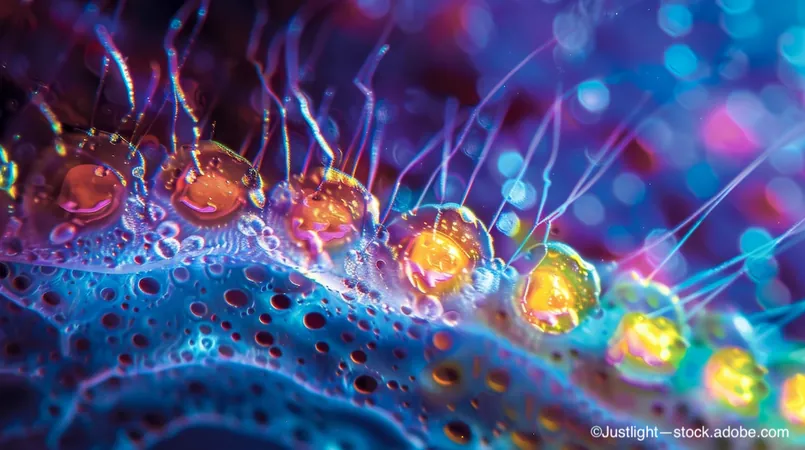
Unveiling Extraordinary Life: Nature's Resilient Warriors Thriving in Earth's Most Acidic and Alkaline Lakes!
2024-12-07
Author: Siti
The World's Most Acidic Lake
In a breathtaking volcanic crater in Indonesia that towers over 7,700 feet (2,350 meters), lies Earth's largest acidic lake, with water comparable to battery acid! Author David Strayer explores the extreme chemical environments of our planet's lakes in his groundbreaking book "Beyond The Sea: The Hidden Life in Lakes, Streams, and Wetlands" (Johns Hopkins University Press, 2024).
Understanding Water Chemistry
For many, water chemistry may seem monotonous, but it is critical to understanding the diverse ecosystems thriving in these harsh environments. The pH scale, which measures acidity, reveals a staggering array of chemical compositions within inland waters, ranging from fiercely acidic to strongly alkaline. A pH of 7 is neutral; anything below is acidic (like vinegar at a pH of 2.5), while anything above is alkaline (such as household ammonia at about 11.5). An astonishing fact: the pH scale is logarithmic! This means that even slight changes can lead to massive variations in acidity. For instance, the ocean's pH today is roughly 8.1, and models predict it may drop to 7.8 by 2100 due to rising CO2 levels—such seemingly insignificant changes can spell disaster for marine life!
Extreme Environments: Acidic Lakes
Surprisingly, volcanoes host some of the most extreme pH levels on Earth. Take Kawah Ijen, for instance; here, the water can reach an astonishing pH as low as 0.1, making it infinitely more acidic than fresh battery acid. While you might expect nothing could survive in such a hostile environment, scientists have discovered vibrant green algae and three strains of archaea thriving in its depths. Remarkably, some of these creatures not only survive but flourish in these extreme conditions! One archaeon has its sweet spot at a pH of 0.7—yes, that's right, it considers battery acid ideal!
The Marvel of Alkaline Lakes
On the flip side, alkali lakes, which reach pH levels up to 11.5, are another marvel. These lakes emerge in arid regions where water merely evaporates, leaving behind high concentrations of minerals. This is where we find productive microbial life thriving in conditions that would easily overwhelm most species. The Great Salt Lake in Utah, often represented in Western films as perilous 'bad water', is a prime example of such extreme environmental conditions leading to unexpected biodiversity.
The Lithium Connection
Interestingly, alkali lakes have recently surged into the spotlight due to their abundance of lithium, a critical element for electric car batteries. As demand for sustainable materials rises, these lakes may play a pivotal role in the green energy revolution.
Conclusion: Nature's Resilience
The astonishing reality of inland waters reveals a stunning spectrum: from the acidic depths of Kawah Ijen to the bubble of life in alkali lakes, each environment hosts unique adaptations and resilience in nature. This vast range—from pH 0.1 to 11.5—presents both challenges and opportunities for evolution, inspiring us to appreciate the incredible adaptability of life on Earth. Dive into this fascinating world and explore the remarkable hidden life that thrives against all odds!


 Brasil (PT)
Brasil (PT)
 Canada (EN)
Canada (EN)
 Chile (ES)
Chile (ES)
 España (ES)
España (ES)
 France (FR)
France (FR)
 Hong Kong (EN)
Hong Kong (EN)
 Italia (IT)
Italia (IT)
 日本 (JA)
日本 (JA)
 Magyarország (HU)
Magyarország (HU)
 Norge (NO)
Norge (NO)
 Polska (PL)
Polska (PL)
 Schweiz (DE)
Schweiz (DE)
 Singapore (EN)
Singapore (EN)
 Sverige (SV)
Sverige (SV)
 Suomi (FI)
Suomi (FI)
 Türkiye (TR)
Türkiye (TR)